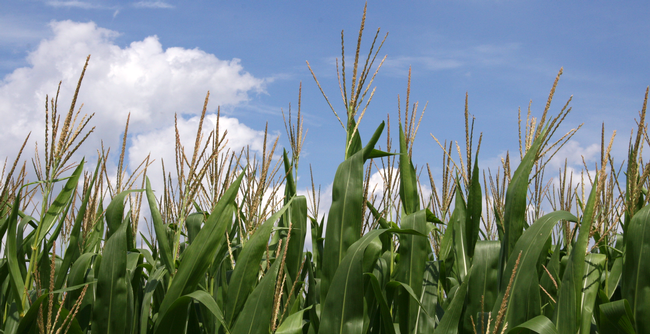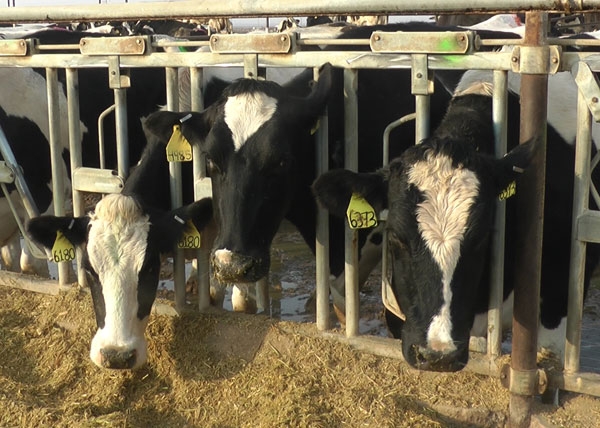Posts Tagged: GMO
Anti-GMO measure is on the Sonoma County ballot
Sonoma County residents are voting today whether to join neighboring counties in a ban of genetically modified agricultural crops, reported Filipa Ioannou in the San Francisco Chronicle.
County voters rejected a similar ordinance 11 years ago. However, judging from the money donated to the campaigns in favor and against Measure M, some minds have been changed. In 2005, more than a $1 million went into the fight, with opponents outspending supporters by about $55,000. This time, the supporters have raised more than detractors, with the campaign in favor receiving $278,233, and the campaign against $67,500, the article said.
This comes despite an impact report by the director of UC Cooperative Extension in Sonoma County, Stephanie Larson. The report says few genetically engineered crops are now grown in Sonoma County and the potential impact of the ordinance on the growth of the local agricultural industry is not known. Larson's report says GMO crops have bee consumed by humans in billions of servings of food over 20 years without a single documented health problem.
“Is this maybe a solution in search of a problem? I wonder about that,” said Kim Vail, executive director of the Sonoma County Farm Bureau. “We live in a free-market economy. Consumers have choices, producers should have choices. Let the market decide.”
Passage of Measure M would align the county with its neighbors. Marin County, which passed Measure B in 2004, was the first to ban GMOs in the United States. Four other Northern California counties - Humboldt, Mendocino, Santa Cruz and Trinity - have banned genetically modified agricultural crops.
Update: Measure M passed with nearly 60 percent of the vote.
'Non-GMO' milk label more about marketing, says UCCE expert
Clover Stornetta Farms of Petaluma will be adding non-GMO certification to its conventional milk in early 2017. The move upset organic and conventional farmers, as well as a few agriculture scientists, reported Tara Duggan in the San Francisco Chronicle.
The non-GMO designation means the milk comes from dairy cows who have been raised with no genetically engineered corn, soy or other products in their diets.
The article featured comments from Alison Van Eenennaam, UC Cooperative Extension specialist based at UC Davis. She said non-GMO animal feed crops have a larger ecological impact than genetically engineered versions because of their decreased resistance to disease and pests, and lower yields.
“We are really talking marketing here — developing a product line to differentiate it from a product that already does not contain GMOs,” she said. “As a company they of course can develop whatever products they want and if they see a profitable market — then it is a good business decision.”
Van Eenennaam said she is concerned that suggesting non-GMO milk is a safer or more environmentally sound product could have a chilling effect on agricultural science advances necessary to feed a world population set to hit 9 billion by 2050.
“We can keep taking technologies away from farmers by pandering to fearmongering around safe technologies — at the end of the day it just increases the environmental footprint of a glass of milk with no food safety benefit," she said.
Chinese scientists use biotechnology to develop tiny pig pets
In the story, a UC Agriculture and Natural Resources expert expressed disappointment in the company's plan to market mini pigs as pets. Alison Van Eenennaam, UC ANR Cooperative Extension specialist in the Department of Animal Science at UC Davis, said the company's decision reflects the "global regulatory gridlock" around genetically engineered food animals.
"Genome editing is a powerful technology that can be used for many beneficial applications … such as producing disease-resistant animals and other things that would have real benefits for the sustainability of food production," she said.
Americans seem to be open to genetically engineered pets. A glowing fish created in Singapore by inserting jellyfish and sea anemone genes into zebrafish eggs has been accepted by many U.S. consumers.
"People are happy to have them in their aquarium, but it's when it's on their dinner plat that they have a different attitude," Van Eenennaam said.
Scientists used different processes in creating glowing fish and miniature swine. With the fish, genes from other organisms were inserted into the DNA. The mini pigs were made by cutting tidbits of DNA out of the pig genome. According to the article, Van Eenennaam believes gene editing animals is no different from traditional selective breeding. Furthermore, she said the FDA's unwillingness to approved genetically engineered food animals is impeding the technology. Companies are deterred from investing in research by the uncertainty.
"(There's too much financial risk) if you go to all the effort of making an animal and it's unclear whether you're going to be able to market it," Van Eenennaam said.
New GMO alfalfa holds exciting possibilities, UC expert says
Good news for dairy cows. Science has found a way to produce alfalfa with less lignin, a component of the plant that has no nutritional value. The new alfalfa variety – genetically modified in a way that puts brakes on the lignin-producing gene – was deregulated by USDA in November.
“In general, a reduced lignin trait in alfalfa is very welcome,” said Dan Putnam, UC Cooperative Extension specialist in the Department of Plant Sciences at UC Davis. “The low-lignin trait has some interesting potential implications for dairy cows and other ruminants, as well as for yield, agronomic efficiency, and even energy and water use efficiency.”
The new variety, called KK179, was developed by Forage Genetics International, Monsanto and the Nobel Foundation. Some of the field testing took place at UC Davis and the UC Intermountain Research and Extension Center in Tulelake, Calif.
KK179 differs from most other GMO agricultural crops in that the modification improves the plant quality. Other common modifications, such as glyphosate resistance and addition of a Bt gene, were designed to help with pest control.
Another difference is the source of the modified gene, Putnam said. In glyphosate-resistant (Roundup Ready) alfalfa, for example, the plant was modified by inserting a bacteria gene. Gene segments reducing lignin were derived from alfalfa itself.
Lignin is a fibrous part of cell walls in plants. It strengthens stems, helping the plant grow upright. However, its concentration in alfalfa is high compared to other forages, a drawback for what is considered the premiere forage of dairy cows.
“Farmers often try to cut early to reduce lignin,” Putnam said. “Unfortunately, yields are decreased by early cutting, often by many tons per acre. If growers were able to harvest later and still obtain good quality, yields would improve.”
That leads to the potential energy- and water-conserving aspects of the KK179 alfalfa.
“If growers reduce harvests by one each year and increase yields with no quality penalty, energy use would decline,” Putnam said. “Also, the amount of milk produced per unit of water used to grow the feed may be increased.”
KK179 won't be for everybody, Putnam cautions. Some export markets reject GMO technology, so growers should check whether their markets will accept alfalfa with the low-lignin trait. Another concern is the possibility of gene flow for farmers who grow alfalfa seed for organic production or export.
“Further research and experience by farmers and researchers are needed to fully understand the importance and implications of reduced-lignin alfalfa on farms,” Putnam said, “but this trait holds some very exciting possibilities.”
An initiative to enhance competitive and sustainable food systems is part of the UC Division of Agriculture and Natural Resources Strategic Vision 2025
GMO fight in southern Oregon sharpens GMO debate in California
"We could do millions of things with transgenics, but we have our hands tied," a story in The Scientist quoted Jorge Dubcovsky, professor in the Department of Plant Sciences at UC Davis.
Dubcovsky commented in The Scientist article about his work in using biotechnology to instill resistance to a devastating plant disease, stripe rust, in wheat.
“Wheat is a very important cereal,” says Ravi Singh of Irrigated Bread Wheat Improvement and Rust Research in Mexico. “Twenty percent of [humans'] calories and about the same [percent of] protein are coming from wheat.”
Genetic engineering is a way to breed long-lasting stem rust–resistant wheat varieties and boost wheat yields around the world. But genetically modified foods are being kept off the market by public opposition and regulatory expenses.
The Scientist article, written by Kerry Grens, said a few groups are forging ahead, including Dubcovsky and other researchers who are cloning stripe rust-resistance genes from wheat and other taxa and identify their functions. For more on Dubcovsky's work, see UC researchers improve wheat nutrition and yield.






